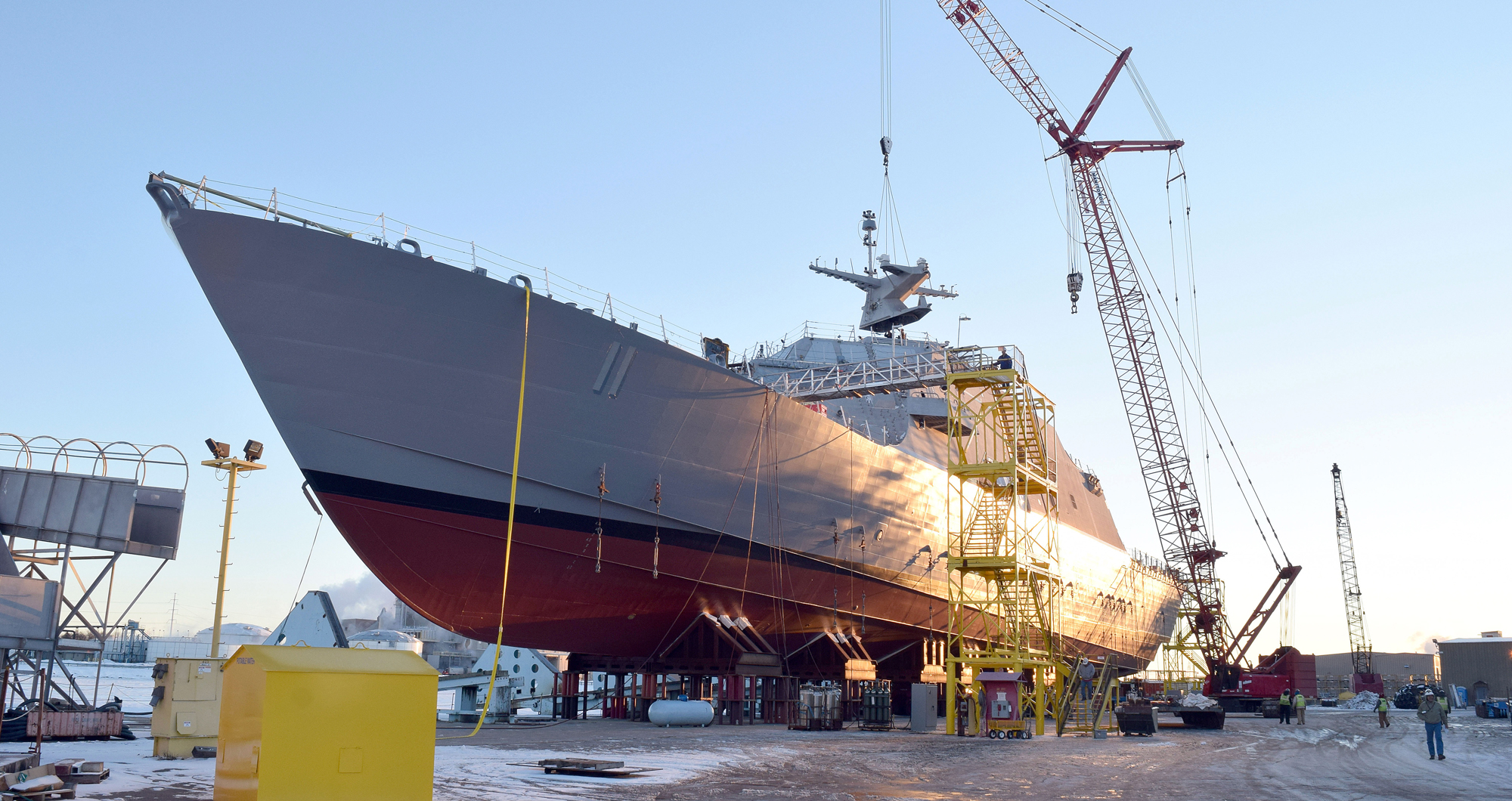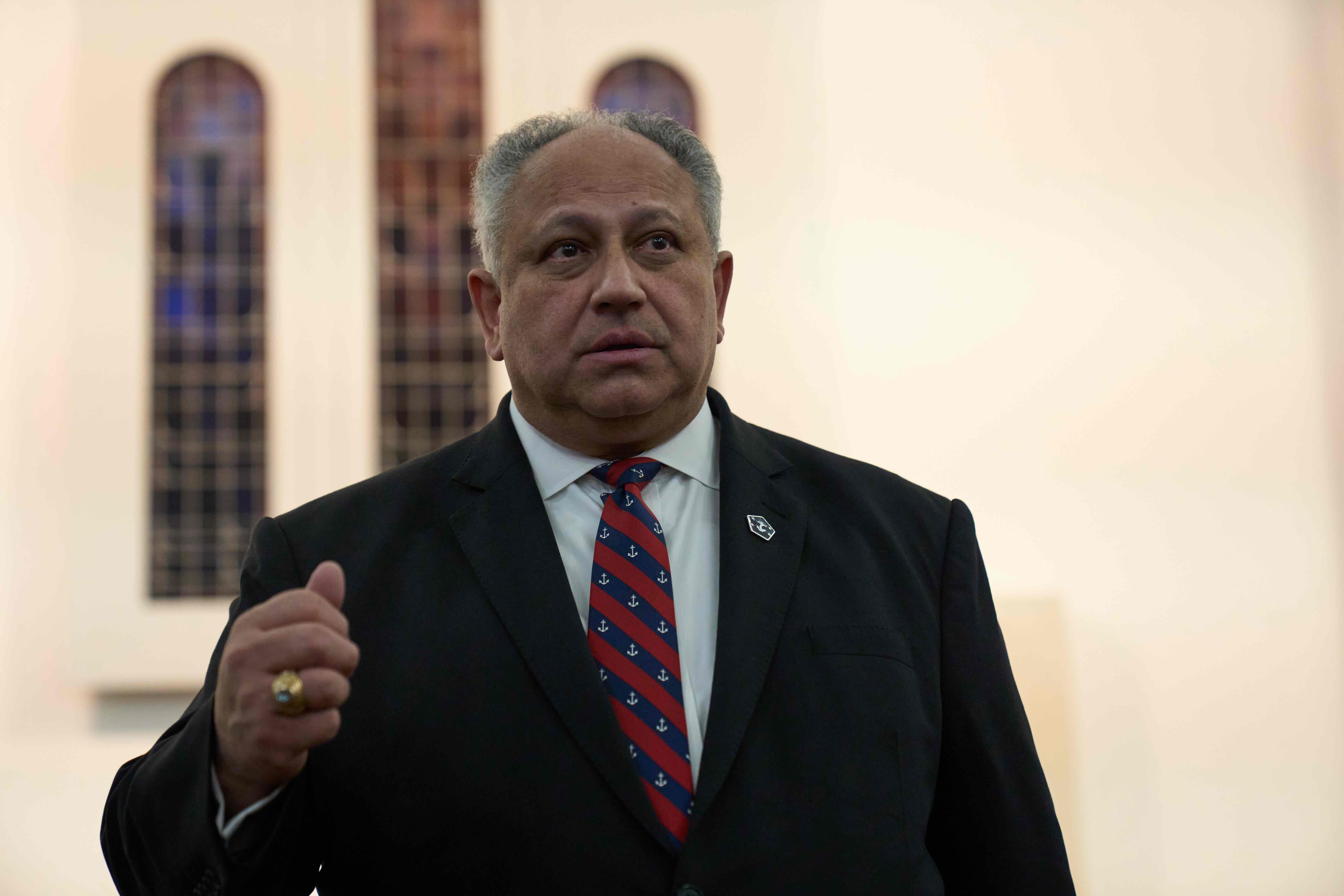
Lockheed Martin is continuing with its Freedom-variant Littoral Combat Ship program as planned despite notice from the secretary of defense that the ship program will be truncated, the vice president for littoral ships and systems told reporters Thursday evening.
Joe North said in a media teleconference that the company’s customer – the Navy – has not yet informed Lockheed Martin of any programmatic changes and therefore any effort to understand how truncating the program would impact the workforce or the ships’ cost would be speculative.
“Sec. [Ash] Carter’s directive is predecisional. Right now we’re maintaining a 52-ship LCS program, and until we get different direction from the Navy as the customer we’re not assessing anything because we won’t speculate on where that goes or doesn’t go,” he said.
Later in the teleconference he added that “the Navy’s still working things internally. As far as we are being told, we’re a 52-ship program and we’re proceeding on that path. We haven’t started to look at any impacts of any kind because we’d be speculating at this point.”
Carter wrote in a December 2015 memo that the program would be limited to 40 ships, but the Navy has pushed back, saying it needs to increase the number of ships in the fleet. The service’s distributed lethality concept revolves around scattering more ships across the globe and more heavily arming them with existing weapons systems – essentially the opposite of what the Carter memo endorses, which is investing heavily in future game-changing technologies.
The Navy decided two years ago to move from its original LCS design to an up-armored and up-gunned Flight 1, which will be called a frigate, beginning with the 33rd ship in the LCS class.
North said Lockheed Martin is “busy doing what-if studies and some engineering studies for different systems the Navy wants to put on the [frigate] and looking at options that we have to rearrange what is today a lot of area set aside for the modularity on the current [LCS] variant.” Whereas the LCS has three mission packages for separate warfare types, the frigate will have surface warfare and anti-submarine warfare capabilities permanently affixed to the ship. North said the open space on the LCS meant for the mission packages will be filled in with these systems, and engineering is being done to understand how to do that.
North added that the engineering effort would last through the end of the year if funding is available to continue the work.
Lockheed Martin is also busy assisting the Navy is a root cause analysis effort to understand a combining gear failure in USS Milwaukee (LCS-5) in December. North said the company is providing the Navy with information about the ship and its systems, and “the Navy is going to get probably a report out [with its findings] somewhere in the next few weeks.”
North explained that the first two Lockheed Martin-built LCSs, USS Freedom (LCS-1) and USS Fort Worth (LCS-3) were built with gears made by MAAG, which went out of business. Beginning with Milwaukee, the rest of the Freedom-variant LCSs will use gears made by RENK, which North said is one of the world’s top gear producers. He would not comment on whether the problems Milwaukee experienced may be class-wide, saying the Navy would be responsible for releasing the findings of the root cause analysis.
He added that he did not foresee any future problems in the LCS supplier base, saying Lockheed Martin has “a core base of subcontractors and suppliers that are sill out there delivering what they promised.”





